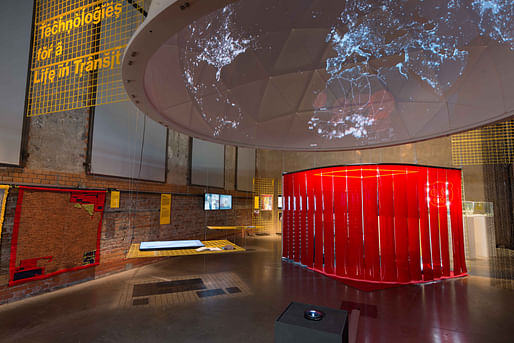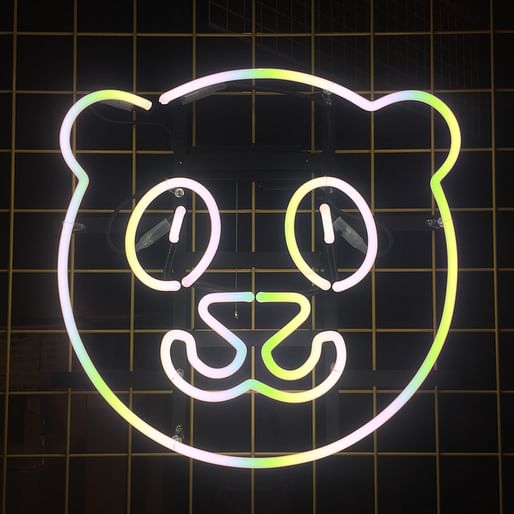

OMA teamed up with the digital consultancy and product development studio Bengler—who also converted the firm’s massive data set into a website—to put together an installation-cum-digital platform for the 2016 Oslo Triennale. Dubbed PANDA, the “counter-organizational platform” both critiques the sharing economy and, in classic OMA-fashion, wryly critiques that critique.
A red plastic strip curtain demarcates a space that could have been teleported from the basement apartment of a hacker. A grid of sticky notes inscribed with the names of various sharing platforms adorns one wall, while on another a poster maps their global impact. On a desk a six-monitor computer displays various images of countercultural resistance, tagged and sorted by theme. Next to it sits a bottle of Provigil—a wakefulness medication commonly (ab)used for all-nighters by college students—and a stack of news clippings exposing the ills of the sharing economy.

A special PANDA WiFi network is accessible throughout the exhibition space, which is located inside the Norwegian Centre for Design and Architecture (DogA). Log on through a portal page with a picture of a smiling family and your internet connection will supposedly be disrupted (or at least, this is what I’m told—it didn’t seem to be working during the press preview).
Meanwhile, a rock rests on a miniature commemorative plinth, like a piece of 1968-era resistance purchased from a gift store. A brass knuckle is emblazoned with the PANDA logo. A glowing neon PANDA sign illuminates the room like in the lobby of a start-up.

“PANDA is at once an act of resistance and a business opportunity,” OMA and Bengler write in an accompanying text. Permeated with irony, the installation feels appropriate for a contemporary moment where any form of resistance is immediately metered by its cooptation, where the signifiers of the ‘political’ tend to feel more like nostalgic throwbacks than substantial counter-hegemonic practices. After all, many sharing economy platforms have countercultural precedents and were originally hailed as a revolutionary disruption of the status quo. Meanwhile the aesthetics of mid-century protest movements have long been appropriated into high fashion and mass entertainment.
In painting a mise en abyme of endless ‘disruptions’, PANDA carries both a real critique of the detrimental effects of the so-called sharing economy and seems to ask what, besides a return to an imagined past, comes after it’s dismantled.
PANDA is an installation in On Residence, an exhibit of the 2016 Oslo Triennale, After Belonging. For more on the Triennale, check out our interview with the curators here, and stay tuned for more reports from Oslo.
No Comments
Block this user
Are you sure you want to block this user and hide all related comments throughout the site?
Archinect
This is your first comment on Archinect. Your comment will be visible once approved.